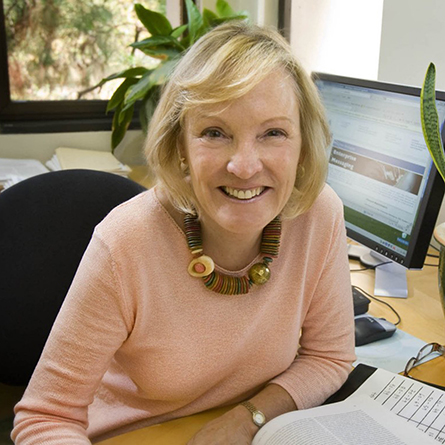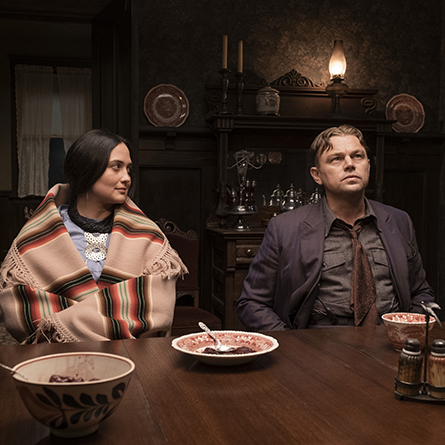
Jennifer Hollis '95 helps families say good-bye to loved ones
As families struggle to say good-bye to loved ones at the Lahey Clinic in Burlington, Mass., Jennifer Hollis ’95 is in the background, working to ease their pain.
Hollis, the only music-thanatologist in the Boston area, is one of a small but growing group of professionals who are uniting music and medicine in end-of-life care. She is specially trained to play the harp and use her voice to help those who are dying.
While Hollis said it can be challenging to watch hundreds of patients and their families grieve, she is committed to her work, which combines her two passions – music and service.
“Music-thanatology gave me the opportunity to be a musician in a new way – helping relieve suffering while exploring questions of meaning and spirituality,” said Hollis, who works as an assistant director of admissions at Harvard Divinity School by day but plays for the dying at night.
Music-thanatologists have pointed to studies that have shown that music can actually help patients sleep and relieve pain and breathing difficulties. Erin Casey, a nurse on Lahey’s medical ICU, told the Boston Globe that Hollis’ music “relaxes everybody. The call buttons don’t go off. I think it really takes [patients] out of Lahey for a little while.”
Hollis, who also earned her Master of Divinity from Harvard Divinity School, first learned about music-thanatology as a Connecticut College student when she happened to read a Connecticut College Magazine article about the topic. The author, Frederick Paxton, the Brigida Pacchiani Ardenghi Professor of History, had just become a visiting professor at the School of Music-Thanatology at the Chalice of Repose Project in Missoula, Montana, one of few schools that offered music-thanatology training.
“I was surprised when I found out Jen was interested in the topic,” he said, “but I was also delighted that a student at the College would think, ‘Wow, this is something for me.’”
While its origins can be traced back to monastic deathbed rituals, music-thanatology is relatively new, initially developed in the early 1970s. The profession is the creation of Therese Schroeder- Sheker, the founder of the Chalice of Repose Project and dean of the school.
Students have come from places as far as Australia to attend the School of Music-Thanatology, now located in Mt. Angel, Oregon, to study the practice of using live music at the bedside of dying patients.
“Music-thanatology is something that immediately touches certain people, and they wind up devoting their lives to it,” Paxton said.
Eventually, Hollis wanted to learn more, too, and from 1996-98, she studied the practice in Montana, where she reconnected with Paxton, who had also taught her at Connecticut College. More than a decade later, Hollis is about to release her own book on the topic, Music at the End of Life: Easing the Pain and Preparing the Passage, and continues to learn from her work.
“Music-thanatology teaches me a lot about the fragility of life and the beauty of our connections to other people,” she said. “It can be difficult, but I also have the privilege to witness people express incredible love and tenderness for one another, and this is what sustains me.”
-Rachel Harrington
November 2, 2009
